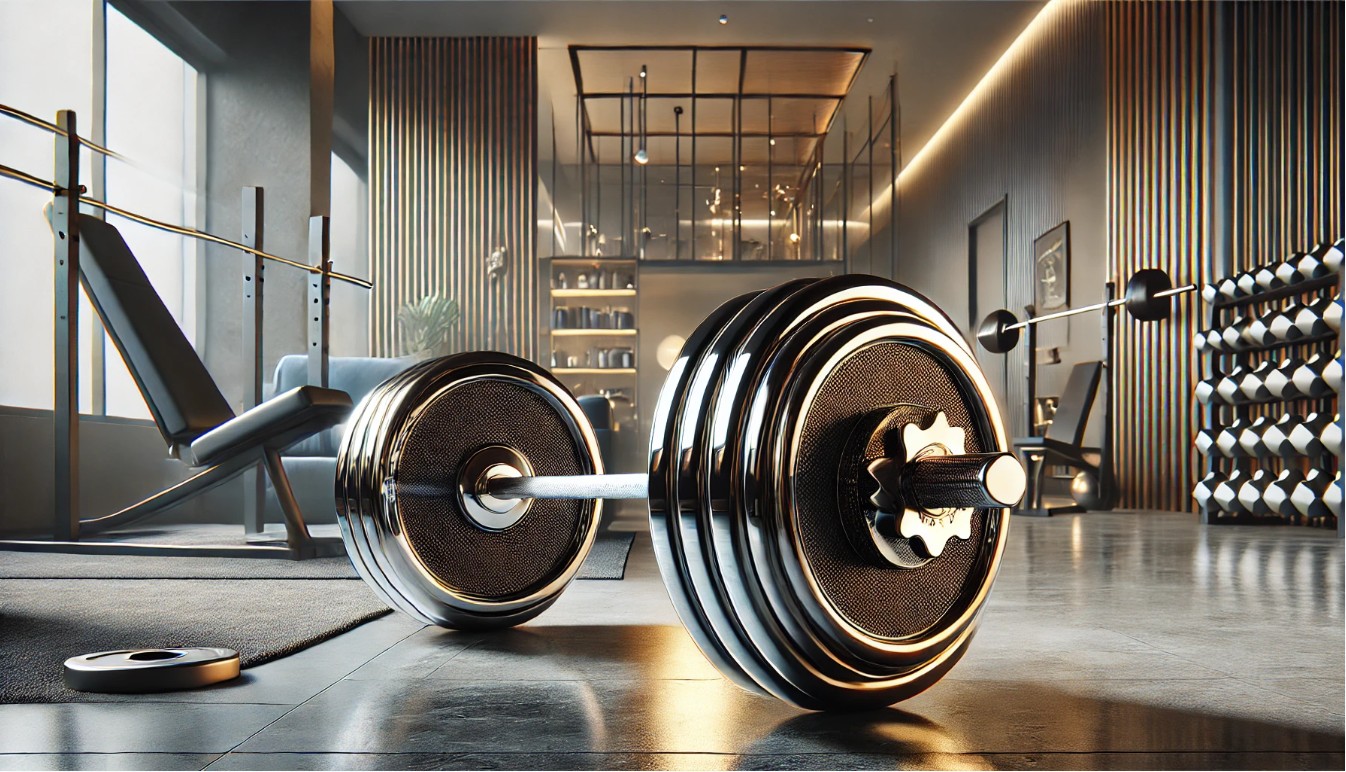When it comes to building the perfect home gym, one of the most essential pieces of equipment is the barbell. Whether you're a seasoned weightlifter or just starting your fitness journey, the best barbell for home gym is crucial for strength training, endurance, and overall fitness. But with so many different types, brands, and features available, choosing the right one can be overwhelming.
Did you know that over 70% of people who start a home gym cite purchasing the wrong equipment as one of their biggest regrets? That’s because investing in a high-quality barbell can significantly impact your performance and results, ensuring you get the most out of every workout.
In this comprehensive guide, we will walk you through the critical factors to consider when selecting the best barbell for your home gym. From material and construction to weight capacity and grip design, we've got you covered. You’ll learn how to select the perfect barbell that aligns with your fitness goals and enhances your home gym experience. Let's dive in!
1. Understanding the Different Types of Barbells
Before diving into the specifics of choosing the best barbell for home gym, it’s important to understand the different types of barbells available. Each type has its unique features designed for various lifting styles and goals. Here are the most common types:
Standard Barbells
Standard barbells are the most basic type of barbell. They typically weigh 15-20 kg (33-44 lbs) and have a 1-inch diameter. These are great for beginners or those who only plan to lift lighter weights. However, they might not be ideal for heavy lifting because of their limited weight capacity.
Olympic Barbells
Olympic barbells are the gold standard for most home gyms. They are designed for serious strength training and weightlifting. They usually weigh around 20 kg (44 lbs) for men and 15 kg (33 lbs) for women, with a 2-inch diameter. Olympic barbells are built to handle heavy loads, making them ideal for compound exercises like squats, deadlifts, and bench presses.
Powerlifting Barbells
Powerlifting barbells are specially designed for the three main powerlifting movements: squat, bench press, and deadlift. They are typically stiffer and have a thicker bar diameter to withstand the heavy loads required for powerlifting. These barbells are built to offer maximum durability and stability during intense lifts.
CrossFit Barbells
CrossFit-specific barbells are designed to be versatile for a variety of movements, including Olympic lifts, overhead presses, and functional fitness exercises. These barbells often come with a slightly lighter design and are constructed for speed and agility, catering to high-intensity training.
Hex or Trap Barbells
Trap or hex barbells have a unique design that allows you to lift without having to squat down as low. They are ideal for targeting the lower body with movements like deadlifts and shrugs. Their design allows for better body mechanics and can reduce strain on your back.
2. Key Factors to Consider When Choosing a Barbell
Now that you know the types of barbells, let’s dive deeper into the essential factors to consider when purchasing the best barbell for your home gym. Choosing the right one will enhance your performance and ensure your safety while lifting.
Weight Capacity
One of the most important factors to consider is the weight capacity of the barbell. If you're planning to lift heavy weights, you'll need a barbell that can handle more load. Most Olympic barbells can support between 700 to 1,000 pounds, while powerlifting barbells may go even higher. Always check the barbell’s weight capacity to ensure it can safely handle your lifting goals.
Material and Construction
The construction of the barbell plays a significant role in its durability, performance, and overall feel. Most high-quality barbells are made from steel, but the type of steel varies:
- Alloy Steel: Offers great strength and durability, typically found in high-end barbells.
- Chrome-Plated Steel: Offers rust resistance and a polished look but may be less durable over time compared to alloy steel.
- Stainless Steel: Known for its excellent rust resistance and long-lasting performance, but often comes with a higher price tag.
Grip and Knurling
The grip and knurling are critical for ensuring you have a secure hold on the barbell during lifts. The knurling refers to the textured pattern on the barbell shaft. For home gyms, you should look for a barbell with medium to aggressive knurling to avoid slipping, especially when lifting heavy loads.
- Powerlifting Barbells often have aggressive knurling for a stronger grip.
- Olympic Barbells generally feature a less aggressive grip to allow for better hand rotation during movements like cleans and snatches.
Barbell Length
Barbell length varies depending on the type. For instance, Olympic barbells are typically 7 feet long, while standard barbells are shorter. The length you need will depend on your lifting style and the space available in your home gym.
Sleeve Rotation
A crucial feature for performance is the sleeve rotation. The sleeves of the barbell (the portion where the weights are loaded) should rotate smoothly to allow for fluid movement during lifts, especially in Olympic lifts. High-quality barbells feature ball bearings or bushings that enable smooth rotation. For beginners, a barbell with bushings may suffice, but if you’re training for Olympic lifts, consider one with ball bearings for optimal performance.
Weight of the Barbell
The standard weight for an Olympic barbell is around 20 kg (44 lbs) for men and 15 kg (33 lbs) for women, but there are variations. For example, you can find barbells specifically designed for women that weigh 15 kg or for lighter trainees. It's important to ensure the barbell’s weight aligns with your training goals.
3. What Makes Hamilton Home Fitness Barbells Stand Out?
Hamilton Home Fitness is a trusted name in the fitness industry, and for good reason. Our barbells are crafted with the highest quality materials and designed to withstand the demands of both beginners and seasoned athletes. Here's why our barbells are the best barbell for your home gym:
- Durability: Made from premium steel, our barbells are designed to last. Whether you're performing high-intensity CrossFit workouts or powerlifting sessions, Hamilton Home Fitness barbells can withstand heavy loads and intense training sessions.
- Precision Engineering: Our barbells are meticulously engineered with smooth sleeve rotation, ensuring a fluid, safe lifting experience.
- Versatility: Whether you're focusing on strength, endurance, or Olympic lifting, our barbells offer the versatility you need to tackle a wide range of exercises.
- Safety and Comfort: The knurling on our barbells is optimized for grip, providing a firm, comfortable hold without compromising safety during lifts.
By choosing a Hamilton Home Fitness barbell, you’re not just investing in a piece of equipment; you’re investing in your fitness journey. Visit Hamilton Home Fitness to explore our full range of barbells and elevate your home gym setup today!
Research & Sources
To ensure the accuracy of the information provided in this guide, we’ve relied on reputable sources from fitness industry leaders and experts:
- National Strength and Conditioning Association (NSCA) for guidelines on weight training and barbell use.
- Barbell Logic and EliteFTS for expert opinions on the best barbells for strength training and powerlifting.
- Research data from T-Nation and Stronglifts on barbell specifications and lifting safety.
These sources ensure that the information shared here is grounded in credible, research-backed insights, giving you confidence in your decision-making process.
FAQ (Frequently Asked Questions)
1. What is the best barbell for a home gym?
The best barbell for home gym depends on your fitness goals. If you're focusing on Olympic lifting, an Olympic barbell with a 20 kg weight and ball bearing sleeves is ideal. For powerlifting, a barbell with a stiffer shaft and higher weight capacity is necessary. Hamilton Home Fitness offers a wide range of high-quality barbells suited for different fitness needs.
2. How much weight can a standard barbell hold?
Standard barbells generally have a weight capacity of around 300-500 pounds. However, higher-quality Olympic or powerlifting barbells can support upwards of 700-1,000 pounds or more.
3. Should I choose a barbell with aggressive or light knurling?
For beginners, a barbell with medium knurling is ideal as it provides a good balance between comfort and grip. More advanced lifters who perform heavy lifts may prefer a barbell with aggressive knurling for better grip security.
Conclusion
Choosing the best barbell for your home gym is essential for achieving your fitness goals. With the right barbell, you’ll not only increase your strength but also ensure safety and comfort throughout your workouts. Hamilton Home Fitness is proud to offer premium, durable, and versatile barbells that cater to all fitness levels, ensuring you have the best equipment to succeed in your fitness journey.
Ready to take your fitness to the next level? Explore our selection of barbells at Hamilton Home Fitness and transform your home gym today!







